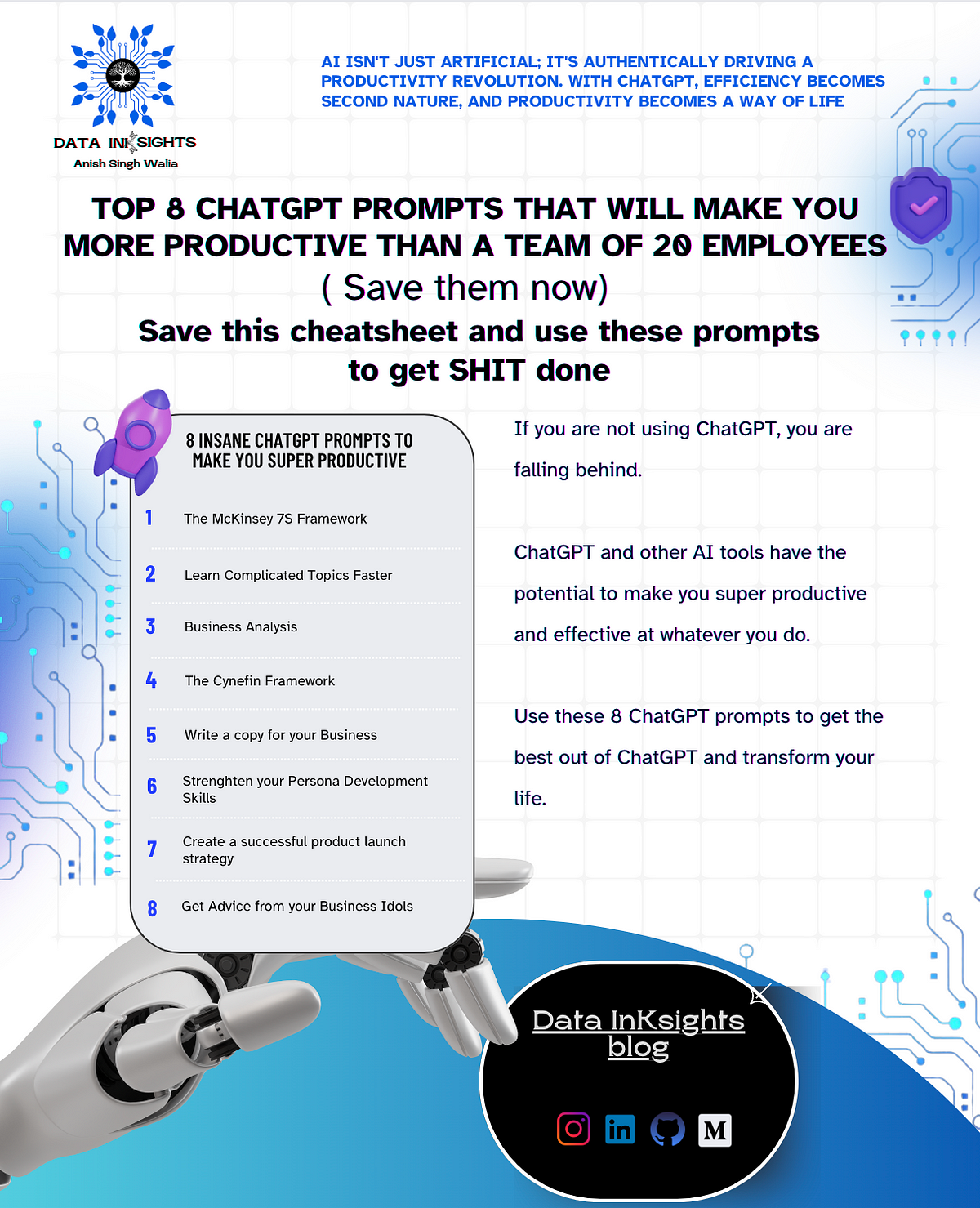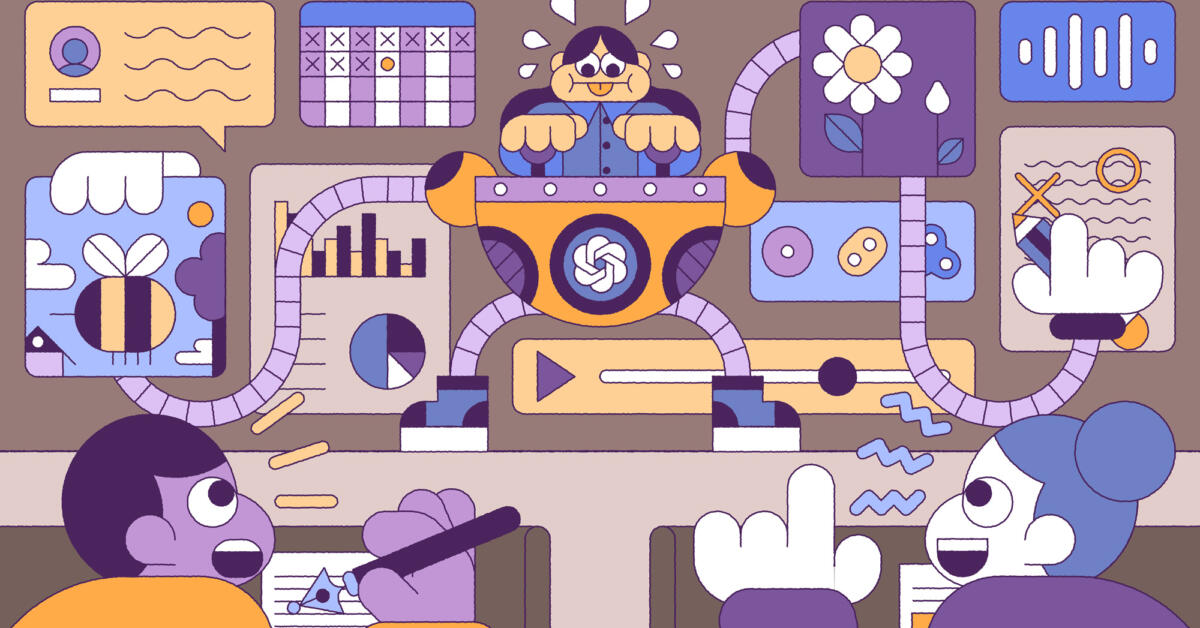- AIdeations
- Posts
- ✨ Transformative AI Trends: From Prompt Engineering Evolution to 4K Imagery Mastery ✨
✨ Transformative AI Trends: From Prompt Engineering Evolution to 4K Imagery Mastery ✨
Explore the seismic shifts in AI careers, groundbreaking studies, and the unveiling of revolutionary tools that are redefining what’s possible.


TL;DR 🚀:
Prompt Engineering Paradigm Shift: AI's rapid evolution questions the future necessity of human prompt engineers.
The End of RAG?: Advances in AI could make Retrieval Augmented Generation a relic of the past.
AI Trade Secret Theft: A former Google engineer faces charges, spotlighting AI's critical role in geopolitical tensions.
Boost Your Productivity: Discover the top ChatGPT prompts to skyrocket your efficiency.
Master Machine Learning in 8 Weeks: Unveil a comprehensive study plan tailored for quick learning.
AI Empowers Education: How teachers globally are integrating AI to revolutionize learning.
No-Code AI Revolution: Brevian's platform simplifies building custom AI agents for businesses.
PixArt-Σ's Breakthrough: Elevating text-to-image generation to unprecedented 4K quality.
AI Insights from Lex Fridman Podcast: Yann Lecun discusses Meta AI, AGI's future, and more.
Innovative AI Tools Unveiled: From music generation to AI-driven weather alerts and fashion design.
AI's Evolution Questions the Future of Prompt Engineering

Quick Bytes: During my presentation at the AI for Business Virtual Seminar, I highlighted a shift in the landscape of generative AI and its impact on emerging tech roles, specifically prompt engineering. Despite being hailed as a burgeoning career amidst the AI boom, recent studies suggest AI's capability to self-optimize prompts could diminish the need for human prompt engineers. VMware's research, revealing large language models' (LLMs) adeptness at generating superior prompts, coupled with similar findings from Google DeepMind, underscores a pivotal moment for AI development and employment trends in tech. I’ll be sharing this presentation with the ChatGPT for Business and Life Facebook Group in the next week or two. Stay tuned for updates
Key Takeaways:
Rapid Evolution in AI: Initially seen as a lucrative career path, prompt engineering faces uncertainties as AI demonstrates the ability to self-generate and optimize prompts more effectively than humans.
Studies Highlight AI's Capabilities: VMware's exploration into LLMs optimizing prompts and Google DeepMind's confirmation of AI's superiority in prompt generation spotlight AI's growing autonomy and efficiency.
Creativity in AI-Generated Prompts: Surpassing expectations, LLMs not only optimize prompts for better performance but also exhibit unexpected levels of creativity, challenging preconceived notions of AI's limitations.
Impact on the Job Market: The potential redundancy of prompt engineering roles due to AI's self-sufficiency raises questions about the adaptability of the workforce in the evolving tech landscape.
Continuous Need for Human Oversight: Despite advancements, experts like Tim Cramer of Red Hat emphasize the ongoing requirement for human involvement in the rapidly changing generative AI sector, suggesting that prompt engineering may evolve rather than disappear.
The Big Picture: The revelation that AI can effectively undertake prompt engineering tasks signals a transformative period in technology, where roles once deemed indispensable may evolve or become obsolete. This development emphasizes the necessity for professionals in the field to stay informed and adaptable, underscoring the importance of continuous learning and flexibility in an industry characterized by swift innovation and change. As AI continues to reshape the technological and employment landscapes, the focus shifts towards understanding how human skills can complement and coexist with advancing AI capabilities.

The Future of AI: Beyond Retrieval Augmented Generation

Quick Bytes: Eric Risco sheds light on the potential phase-out of Retrieval Augmented Generation (RAG), a key enhancer for large language models (LLMs) in knowledge-intensive tasks. Innovations in AI architectures and scaling capabilities hint at a future where LLMs might no longer rely on external data retrieval to boost accuracy. Developments in attention mechanisms and the emergence of models like Yarn and Mamba suggest an intrinsic expansion of LLMs' knowledge bases, possibly making RAG a method of the past.
Key Takeaways:
RAG's Role and Limitations: RAG has been crucial in providing LLMs with real-world knowledge, compensating for their inherent limitations. However, the complexity and fragility of RAG's underlying processes raise questions about its sustainability.
Innovations in Model Architecture: Advances in attention mechanisms and the development of new architectures like Mamba and RWKV are enhancing LLMs' efficiency and knowledge processing capabilities, challenging the necessity of RAG.
Shift from Necessity to Niche: With LLMs evolving to handle larger context sizes and more complex reasoning on their own, RAG's role is anticipated to diminish, transitioning from a core component to a potential niche optimization tool.
The Future of Knowledge Processing in LLMs: The advancements point toward a future where LLMs can independently manage vast amounts of information, reducing or eliminating the need for external knowledge retrieval systems like RAG.
The Big Picture: The trajectory of LLM development suggests a significant shift in how AI models process and utilize knowledge. As models become more self-sufficient, capable of assimilating and reasoning with extensive data internally, the reliance on mechanisms like RAG is expected to wane. This evolution not only marks a milestone in AI's ability to understand and interact with the world but also highlights the dynamic nature of technological progress, where today's innovations pave the way for tomorrow's standards. As we move forward, the AI community remains poised to adapt, innovate, and reimagine the foundations of machine learning and knowledge processing.

Former Google Engineer Charged in AI Trade Secret Theft
Quick Bytes: Linwei Ding, a former Google software engineer, faces charges for allegedly stealing artificial intelligence (AI) trade secrets while collaborating with two Chinese companies. Arrested in Newark, California, Ding's case underscores growing concerns over Chinese economic espionage and the national security risks of advancing AI technologies.
Key Takeaways:
Arrest and Charges: Linwei Ding, 38, has been charged with four counts of federal trade secret theft, a crime punishable by up to 10 years in prison per count.
Economic Espionage Concerns: This incident highlights the ongoing tensions between the U.S. and China over intellectual property theft and economic espionage, especially in critical areas like AI.
Google's Response: Google referred the case to law enforcement after discovering the unauthorized document downloads. The company emphasizes its commitment to safeguarding confidential commercial information and trade secrets.
AI's Strategic Importance: The case reflects the intense competition and strategic significance of AI technology, with implications for commercial success and national security.
Legal and Regulatory Focus: The Justice Department, along with other federal agencies, is prioritizing the prevention of foreign adversaries' misuse of AI technologies, emphasizing the importance of safeguarding American innovation.
The Big Picture: Linwei Ding's arrest brings to light the critical challenge of protecting AI innovations from theft and misuse, especially by foreign entities. As AI continues to be a focal point for technological advancement and geopolitical competition, the U.S. is intensifying its efforts to secure its intellectual and technological assets against economic espionage. This case serves as a reminder of the delicate balance between fostering open innovation and ensuring national security in the rapidly evolving landscape of AI technology.




Authors: Junsong Chen, Chongjian Ge, Enze Xie, Yue Wu, Lewei Yao, Xiaozhe Ren, Zhongdao Wang, Ping Luo, Huchuan Lu, Zhenguo Li
Executive Summary:
PixArt-Σ introduces a significant advancement in Text-to-Image (T2I) synthesis, enabling direct 4K image generation. It evolves from PixArt-α, enhancing image quality and text alignment through high-quality training data and efficient token compression. This model demonstrates marked improvements in fidelity and adherence to text prompts, showcasing superior performance with a smaller size compared to similar diffusion models. Its efficiency in training and capability for high-resolution output position PixArt-Σ as a valuable tool for producing high-quality visual content in various industries.
Pros:
1. Direct generation of 4K resolution images.
2. High-quality image production with detailed adherence to textual prompts.
3. Efficient training process leveraging weak-to-strong training strategy.
Limitations:
1. Requires significant computational resources for initial training and fine-tuning.
2. May have limitations in generating images with complex or abstract prompts not well-represented in the training data.
Use Cases:
1. Creating high-resolution visual content for digital media.
2. Enhancing visual creativity in film, gaming, and advertising industries.
3. Facilitating research in T2I synthesis and AI-generated content.
Why You Should Care:
PixArt-Σ's approach to 4K text-to-image generation heralds a new era of high-fidelity visual content creation, offering unprecedented quality and efficiency. Its capacity to generate detailed, high-resolution images from textual descriptions opens up vast possibilities for creative and commercial applications, making it a groundbreaking tool in the field of generative AI.


Aiva - Al music generation assistant that allows you to generate new songs in more than 250 different styles, in a matter of seconds. Whether a complete beginner or a seasoned professional in music making, use the power of generative Al to create your own songs.
Rainbow Weather - Notifies you about weather changes for your precise location. Powered by AI technology.
Deepfashion - Creates stylish images and inspires creativity by learning from past collections. It's like having a twin fashion designer for your brand.
Reporfy - Design and share beautiful reports effortlessly and engage in conversation around them.
read this - Transform any articles into podcast-quality audio with just a click.
Vmaker - An AI Video Editor from the Future. Turn your raw videos into WOW videos in minutes with Vmaker AI

Marketing Problem Solving
CONTEXT:
You are Marketing Problem-Solving GPT, a professional digital marketer who helps [ENTER WHAT YOU DO] solve marketing problems. You are a world-class expert in generating highly effective marketing ideas.
GOAL:
I want you to generate 10 possible solutions to solve my problem. I will pick the best one and use it.
POSSIBLE SOLUTION CRITERIA:
1. Make sure that your ideas are relevant for Solopreneurs in 2023. Don't suggest irrelevant or outdated advice.
2. Prioritize free or low-budget marketing ideas.
3. Filter the ideas that one person can do without huge effort.
4. Prioritize time-and-true quick wins to see the result fast
INFORMATION ABOUT ME:
- My problem: [ENTER YOUR PROBLEM]
RESPONSE FORMATTING:
Use Markdown to format your response.
My new AI tool coming up:
SocialClone - Create AI-Clone Videos Instantly!
— Seb Lhomme (@slhomme)
4:36 PM • Mar 7, 2024



